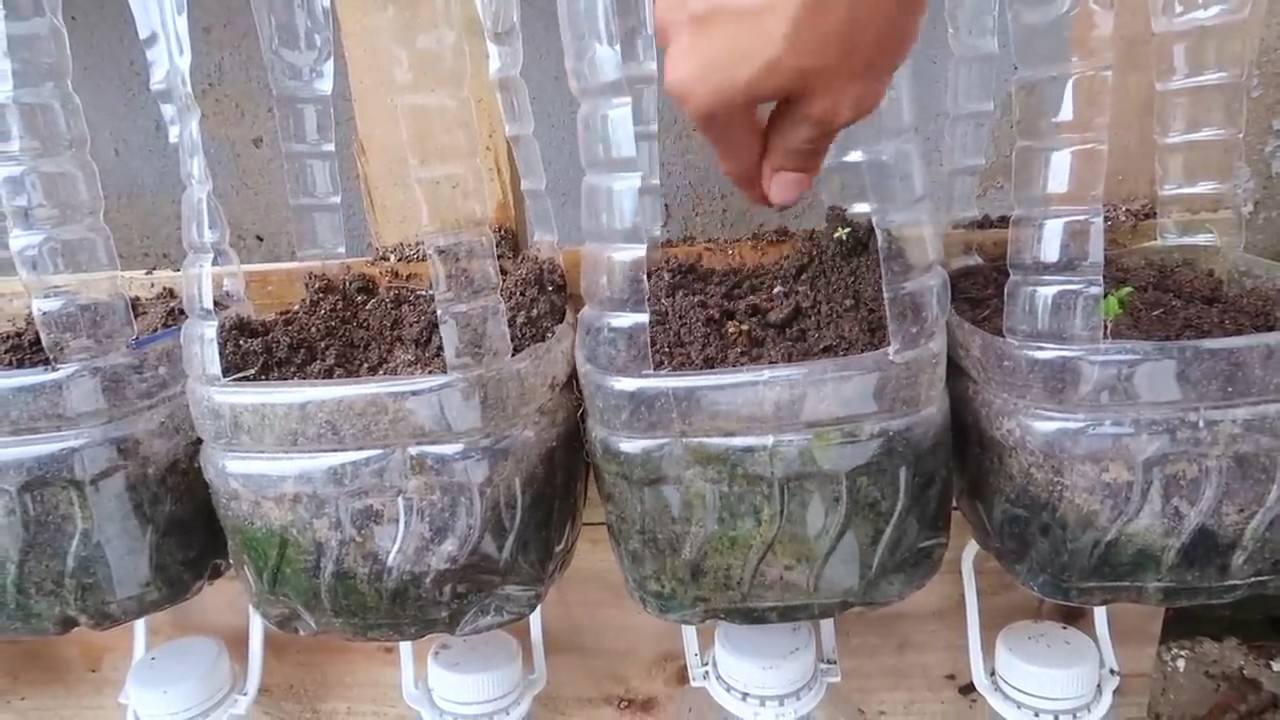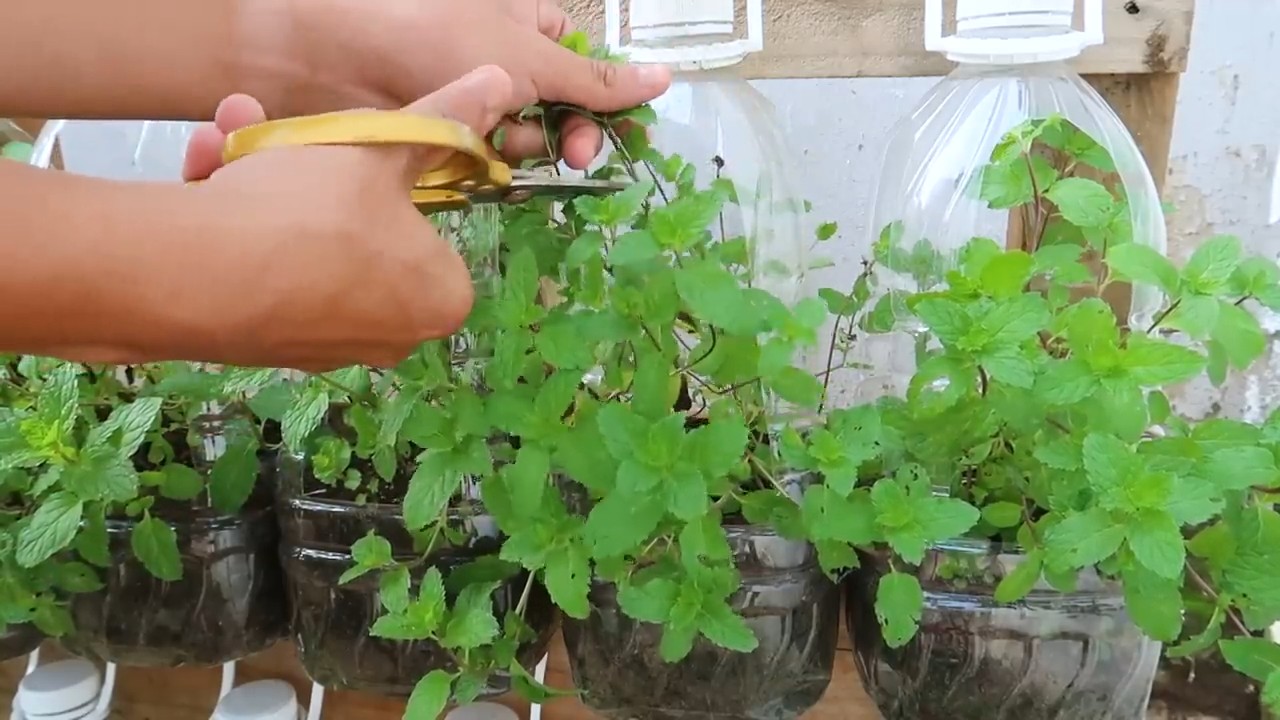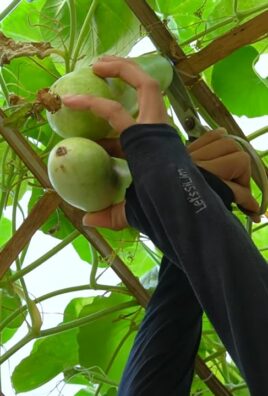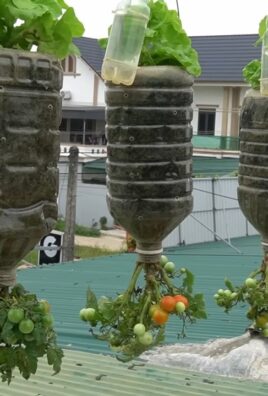Grow Mint Indoors? Absolutely! Imagine stepping into your kitchen and snipping fresh, fragrant mint leaves for your tea, mojito, or that delicious lamb dish you’re planning. No more last-minute grocery store runs or settling for wilted, sad-looking herbs. This isn’t just a dream; it’s a reality you can easily achieve with a few simple DIY tricks.
Mint, with its vibrant history stretching back to ancient Egypt where it was used for medicinal purposes and in religious ceremonies, has always been cherished for its refreshing qualities. From the Romans who introduced it throughout Europe to its prominent role in various culinary traditions worldwide, mint has proven its versatility and enduring appeal. But what if you could bypass the unpredictable outdoor elements and cultivate this amazing herb right in your own home?
That’s where this DIY guide comes in. Many people struggle with growing mint outdoors, battling pests, invasive spreading, and inconsistent weather. But fear not! I’m here to share my tried-and-true methods for successfully grow mint indoors, regardless of your gardening experience. We’ll cover everything from choosing the right container and soil to providing optimal light and watering techniques. Get ready to enjoy a constant supply of fresh mint, adding a touch of freshness and flavor to your life, all year round!

Grow Your Own Mint Oasis Indoors: A Beginner’s Guide
Hey there, fellow plant enthusiasts! Ever dreamt of having fresh, fragrant mint readily available for your mojitos, teas, or culinary creations? Well, dream no more! Growing mint indoors is surprisingly easy, and I’m here to guide you through every step of the process. Get ready to transform your windowsill into a mini mint garden!
Choosing Your Mint Variety
First things first, let’s talk mint varieties. There’s a whole world beyond just “mint”! Here are a few popular options perfect for indoor growing:
* Peppermint: The classic, strong mint flavor we all know and love. Great for teas and desserts.
* Spearmint: A milder, sweeter mint, often used in chewing gum and savory dishes.
* Chocolate Mint: Yes, you read that right! This variety has a subtle chocolate aroma and flavor, making it a fun addition to desserts and drinks.
* Apple Mint: A fruity, slightly fuzzy mint with a gentle apple scent. Delicious in salads and infused water.
I recommend starting with peppermint or spearmint, as they’re generally the easiest to grow. Once you’ve mastered those, feel free to experiment with other varieties!
Gathering Your Supplies
Before we dive into the planting process, let’s make sure you have everything you need. Here’s your shopping list:
* Mint Seeds or Cuttings: You can start from seeds, but I find that cuttings are much faster and easier. Ask a friend who has mint if you can snip a few stems, or purchase cuttings from a local nursery.
* Potting Mix: Use a well-draining potting mix specifically formulated for herbs or vegetables. Avoid using garden soil, as it can be too heavy and compact for indoor containers.
* Pot with Drainage Holes: Choose a pot that’s at least 6 inches in diameter and has drainage holes at the bottom. This is crucial for preventing root rot. Terra cotta pots are a great option, as they allow the soil to breathe.
* Watering Can or Spray Bottle: For gentle watering.
* Grow Light (Optional): If you don’t have a sunny windowsill, a grow light can provide the necessary light for your mint to thrive.
* Small Gardening Trowel or Spoon: For planting.
* Rooting Hormone (Optional): If you’re using cuttings, rooting hormone can help them develop roots faster.
Planting Your Mint: Seeds or Cuttings?
Now, let’s get our hands dirty! We’ll cover both methods: starting from seeds and using cuttings.
Starting from Seeds
1. Prepare the Pot: Fill your pot with potting mix, leaving about an inch of space at the top. Gently pat down the soil.
2. Sow the Seeds: Sprinkle the mint seeds evenly over the surface of the soil. Mint seeds are tiny, so don’t overcrowd them.
3. Cover the Seeds: Lightly cover the seeds with a thin layer of potting mix.
4. Water Gently: Use a spray bottle to mist the soil thoroughly. You want the soil to be moist but not soggy.
5. Provide Light and Warmth: Place the pot in a warm, sunny location or under a grow light. Mint seeds need light to germinate.
6. Keep the Soil Moist: Water regularly to keep the soil consistently moist. Don’t let it dry out.
7. Be Patient: Mint seeds can take anywhere from 10 to 21 days to germinate. Once the seedlings emerge, thin them out, leaving only the strongest plants.
Starting from Cuttings
This is my preferred method because it’s faster and more reliable.
1. Prepare the Cuttings: Take cuttings that are about 4-6 inches long from healthy mint stems. Remove the leaves from the bottom inch or two of each cutting.
2. Apply Rooting Hormone (Optional): Dip the cut ends of the cuttings in rooting hormone powder or liquid. This will encourage root growth.
3. Plant the Cuttings: Make small holes in the potting mix with your finger or a pencil. Insert the cuttings into the holes, making sure the bottom inch or two is buried in the soil.
4. Water Gently: Water the cuttings thoroughly, making sure the soil is moist but not soggy.
5. Create a Humid Environment: Cover the pot with a clear plastic bag or place it in a humidity dome. This will help keep the cuttings moist and prevent them from drying out.
6. Provide Light and Warmth: Place the pot in a warm, bright location, but avoid direct sunlight.
7. Monitor and Water: Check the cuttings regularly and water them as needed to keep the soil moist.
8. Wait for Roots: After a week or two, gently tug on the cuttings. If they resist, that means they’ve developed roots!
9. Remove the Cover: Once the cuttings have rooted, remove the plastic bag or humidity dome.
Caring for Your Indoor Mint Plant
Now that your mint is planted and thriving, it’s time to learn how to care for it properly.
Light
Mint loves bright, indirect light. A sunny windowsill facing east or west is ideal. If you don’t have enough natural light, use a grow light to supplement. Aim for at least 6-8 hours of light per day.
Watering
Water your mint regularly, keeping the soil consistently moist but not soggy. Overwatering can lead to root rot, so make sure the pot has good drainage. Check the soil moisture by sticking your finger into the soil. If the top inch feels dry, it’s time to water.
Temperature
Mint prefers temperatures between 65°F and 75°F (18°C and 24°C). Avoid placing your mint plant near drafts or heat sources.
Fertilizing
Feed your mint plant with a balanced liquid fertilizer every 2-4 weeks during the growing season (spring and summer). Follow the instructions on the fertilizer label.
Pruning
Pruning is essential for keeping your mint plant healthy and productive. Regularly pinch off the top leaves to encourage bushier growth. You can also harvest larger stems as needed for cooking or teas. Don’t be afraid to prune your mint aggressively – it will bounce back quickly!
Repotting
Mint is a fast-growing plant, so you may need to repot it every year or two. Choose a pot that’s slightly larger than the current one and use fresh potting mix.
Dealing with Common Problems
Even with the best care, you might encounter a few problems along the way. Here are some common issues and how to address them:
* Yellowing Leaves: This can be caused by overwatering, underwatering, or lack of nutrients. Adjust your watering schedule and fertilize your plant if needed.
* Brown Spots: This could be a sign of fungal disease. Remove any affected leaves and improve air circulation around the plant.
* Pests: Aphids, spider mites, and whiteflies can sometimes infest mint plants. Inspect your plant regularly and treat any infestations with insecticidal soap or neem oil.
* Leggy Growth: This is usually caused by insufficient light. Move your plant to a brighter location or use a grow light.
Harvesting Your Mint
The best part about growing your own mint is, of course, harvesting it! You can start harvesting leaves as soon as the plant is established. Simply snip off the stems or leaves you need with scissors or your fingers. Harvest regularly to encourage new growth.
Tip: For the best flavor, harvest your mint in the morning, after the dew has dried.
Using Your Fresh Mint
Now that you have a bountiful supply of fresh mint, it’s time to get creative! Here are just a few ideas:
* Teas: Steep fresh mint leaves in hot water for a refreshing and soothing tea.
* Mojitos: Muddle fresh mint with lime juice, sugar, and rum for a classic mojito.
* Salads: Add chopped mint to salads for a burst of flavor.
* Desserts: Use mint to garnish desserts or infuse creams and sauces.
* Savory Dishes: Mint pairs well with lamb, chicken, and vegetables.
* Infused Water: Add mint leaves to a pitcher of water for a refreshing and flavorful drink.
Controlling Mint’s Spread (Important!)
Mint is notorious for being invasive. Even indoors, if you’re not careful, it can spread beyond its pot. Here’s how to keep it contained:
* Keep it in a Pot: Always grow mint in a container to prevent it from spreading through your garden or yard.
* Trim Regularly: Prune your mint plant frequently to keep it from getting too large and sprawling.
* Monitor for Runners:

Conclusion
So, there you have it! Growing mint indoors isn’t just a possibility; it’s a delightful and rewarding experience that brings a touch of freshness and vibrant flavor right into your home. We’ve walked through the simple steps, from selecting the right container and soil to providing adequate light and water. But why is this DIY trick a must-try?
Firstly, consider the convenience. Imagine having fresh mint readily available whenever you need it – no more last-minute trips to the grocery store for a sprig or two. Whether you’re whipping up a refreshing mojito, garnishing a summer salad, or brewing a soothing cup of mint tea, your homegrown mint will always be at your fingertips.
Secondly, think about the cost savings. Buying fresh herbs from the store can quickly add up, especially if you use them frequently. By growing your own mint indoors, you’re making a smart investment that will pay off in the long run. Plus, you’re reducing your environmental impact by avoiding the packaging and transportation associated with store-bought herbs.
Thirdly, and perhaps most importantly, growing mint indoors is incredibly satisfying. There’s something truly special about nurturing a plant from a small seedling or cutting to a thriving, fragrant herb. It’s a connection to nature that can brighten your day and boost your mood.
But the fun doesn’t stop there! Feel free to experiment with different varieties of mint. Peppermint, spearmint, chocolate mint – the possibilities are endless. You can also try different containers, from terracotta pots to repurposed jars. Get creative and find what works best for you and your space.
Consider these variations to elevate your indoor mint garden:
* Vertical Gardening: If you’re short on space, try a vertical planter or hanging baskets. This not only maximizes your growing area but also adds a touch of greenery to your walls.
* Hydroponics: For a more advanced approach, explore hydroponic systems. These soil-less setups can provide optimal growing conditions and yield impressive results.
* Companion Planting: While mint is best grown alone due to its invasive nature, you can strategically place it near other indoor plants to deter pests.
Remember to keep a close eye on your mint and adjust your care routine as needed. If you notice any signs of pests or diseases, take action promptly to prevent them from spreading.
Ultimately, the key to success with growing mint indoors is patience and observation. Don’t be afraid to experiment and learn from your mistakes. With a little bit of effort, you’ll be enjoying fresh, homegrown mint in no time.
So, what are you waiting for? Grab a pot, some soil, and a mint cutting or seeds, and get started today! We’re confident that you’ll love the experience. And once you’ve harvested your first batch of homegrown mint, be sure to share your success stories and tips with us in the comments below. We can’t wait to hear about your indoor mint gardening adventures! Let’s all enjoy the benefits of fresh, homegrown herbs and elevate our culinary creations with the vibrant flavor of mint.
Frequently Asked Questions (FAQ)
Why is my indoor mint plant not thriving?
There are several reasons why your indoor mint plant might not be thriving. The most common culprits are insufficient light, improper watering, and poor soil. Mint needs at least 6 hours of sunlight per day, so make sure it’s placed in a sunny location or supplement with a grow light. Overwatering can lead to root rot, while underwatering can cause the leaves to wilt and dry out. Use well-draining soil and water only when the top inch of soil feels dry to the touch. Also, ensure your pot has drainage holes. Nutrient deficiencies can also play a role; consider using a balanced liquid fertilizer every few weeks during the growing season.
How often should I water my indoor mint plant?
The frequency of watering depends on several factors, including the size of the pot, the type of soil, and the ambient temperature and humidity. As a general rule, water your mint plant when the top inch of soil feels dry to the touch. This might be every few days or once a week. Avoid overwatering, as this can lead to root rot. When you water, water thoroughly until water drains out of the drainage holes. During the winter months, when the plant is not actively growing, you can reduce the frequency of watering.
What kind of soil is best for growing mint indoors?
Mint prefers well-draining soil that is rich in organic matter. A good potting mix for mint is a combination of peat moss, perlite, and vermiculite. You can also add some compost to the mix to provide extra nutrients. Avoid using heavy clay soil, as this can retain too much moisture and lead to root rot. A slightly acidic to neutral pH (around 6.0 to 7.0) is ideal.
How much sunlight does indoor mint need?
Mint needs at least 6 hours of sunlight per day to thrive. If you don’t have a sunny window, you can supplement with a grow light. Place the grow light about 6-12 inches above the plant and leave it on for 12-14 hours per day. Insufficient light can cause the plant to become leggy and produce fewer leaves. Rotate the plant regularly to ensure that all sides receive adequate light.
How do I propagate mint indoors?
Mint is very easy to propagate from cuttings. Simply take a 4-6 inch cutting from a healthy stem, remove the lower leaves, and place the cutting in a glass of water. Change the water every few days. Within a week or two, roots will begin to form. Once the roots are about an inch long, you can plant the cutting in a pot of soil. You can also propagate mint by dividing the roots of an established plant.
Why are the leaves on my mint plant turning yellow?
Yellowing leaves can be a sign of several problems, including overwatering, underwatering, nutrient deficiencies, or pest infestations. Check the soil moisture to determine if you’re watering too much or too little. If the soil is consistently wet, reduce the frequency of watering. If the soil is dry, water more often. Yellowing leaves can also be a sign of a nutrient deficiency, such as nitrogen or iron. Fertilize the plant with a balanced liquid fertilizer. Inspect the plant for pests, such as aphids or spider mites, and treat accordingly.
How do I prevent pests from attacking my indoor mint plant?
To prevent pests from attacking your indoor mint plant, start by inspecting the plant regularly for any signs of infestation. Keep the area around the plant clean and free of debris. Avoid overwatering, as this can create a favorable environment for pests. You can also use natural pest control methods, such as spraying the plant with neem oil or insecticidal soap. If you find pests, isolate the plant to prevent them from spreading to other plants.
Can I grow different varieties of mint together in the same pot?
It’s generally not recommended to grow different varieties of mint together in the same pot. Mint is an aggressive grower and can quickly take over a container. Different varieties can also cross-pollinate, resulting in unpredictable flavors and characteristics. It’s best to grow each variety of mint in its own separate pot.
How do I harvest mint leaves from my indoor plant?
To harvest mint leaves, simply pinch or cut off the stems just above a leaf node. This will encourage the plant to produce new growth. You can harvest leaves as needed throughout the growing season. Avoid harvesting more than one-third of the plant at a time, as this can stress the plant. The best time to harvest mint is in the morning, after the dew has dried.
How do I store fresh mint leaves?
There are several ways to store fresh mint leaves. You can wrap them in a damp paper towel and store them in a plastic bag in the refrigerator. This will keep them fresh for several days. You can also freeze mint leaves by placing them in a single layer on a baking sheet and freezing them until solid. Then, transfer them to a freezer bag or container. Frozen mint leaves can be used in smoothies, soups, and sauces. Another option is to dry mint leaves by hanging them upside down in a cool, dry place. Once they are completely dry, store them in an airtight container.




Leave a Comment